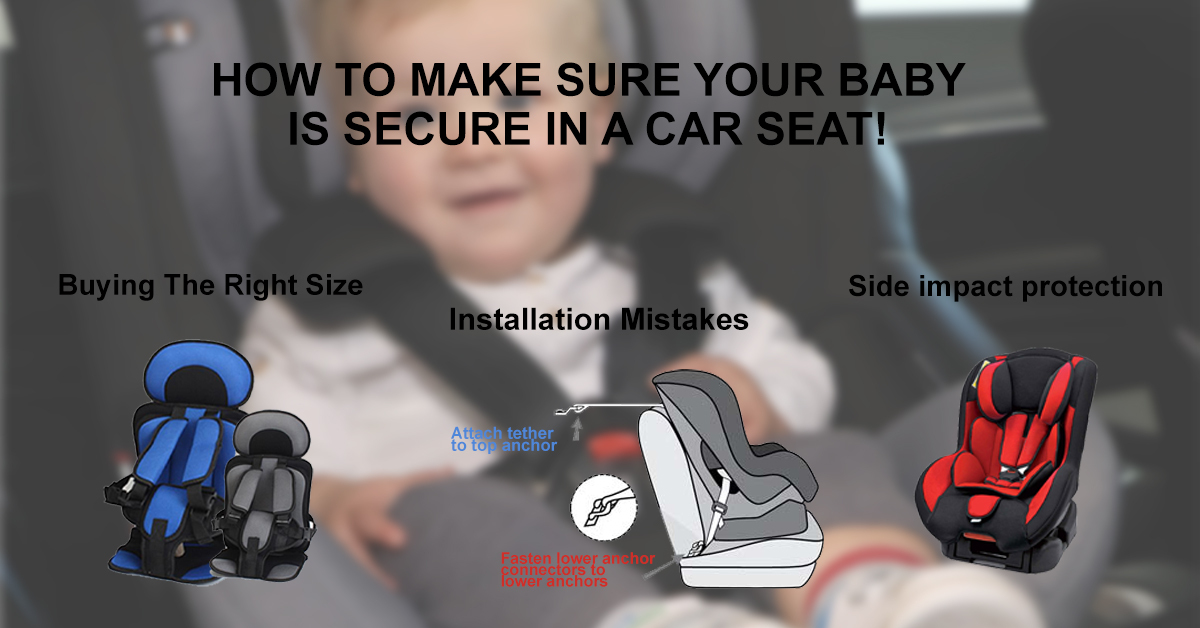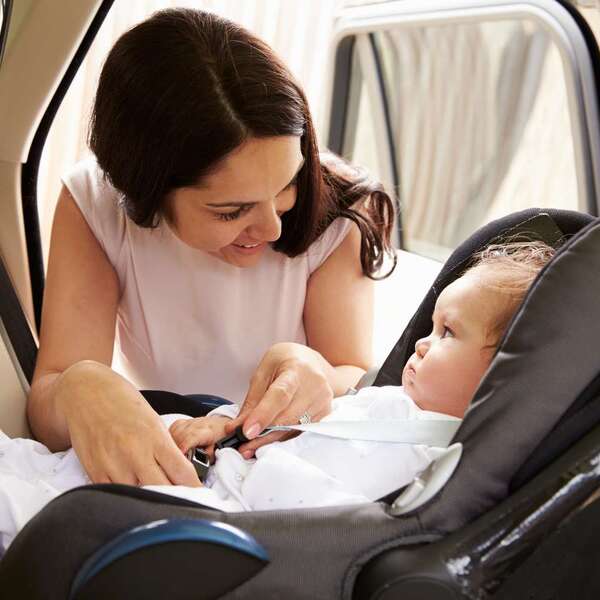
The reason for buying an infant safety car seat is to ensure the maximum safety of your kids. However, what remains the point of getting an expensive safety seat and not utilizing it properly? As specified by research, almost 95% of child safety seat are mishandled, having mistakes and errors. Moreover, you have to follow all the rules and regulations for child safety in a car. The failure to read the instruction booklet in its entirety is the primary reason.
Therefore to confirm that your child is safe and sound, you must know what to do and avoid in the car seat. Reading the manual book that comes with your car safety seat is essential. Have yourself familiar with the seat type and its installation needs. After having all the necessary information, install the seat accordingly to avoid errors.
A properly installed safety car seat can make all the difference in a crash. You are going to learn some beneficial tips and ideas in this article. These will help you to ensure that your newborn car seat safety is maximum so you can travel safely every day.
Buying The Right Size
- Firstly, it is crucial to research beforehand and learn thoroughly about the types and sizes of child safety car seats. It is significant, so you may not end up buying a car seat that might not be a good fit for your baby.
- Different car seats are available on the market according to the baby’s weight and size. The main types are; rear-facing car seats, front-facing car seats, and booster car seats.
- You should use a rear-facing car seat for as long as you can until your baby reaches the maximum weight and height limit. It is because, in the rear-facing, protection is maximum.
Nowadays, there are convertible and 3-in-1 car seats on the market. They can function as both rear and front-facing.
Installation Mistakes
- During installation, the common mistake that parents often make is the car seat movement. According to the recommended seat safety rules, it should not move more than 1 inch sideways and forth. If it moves more than that, it shows that the Infant safety car seat is loosely attached, and you need to tighten it.
- There are two ways of installing the car safety seat. It is done either by seat belts or by pre-installed car anchors. Parents often do not lock the seat belts, which does not ensure maximum protection. On the other hand, for anchors installation, parents misuse them either by wrong slots or by not buckling them.
- Also, avoid using both the lower anchors and seat belts for installation. Just use only one method and make sure to do it properly.
Always set the reclining angle of the car seat according to the manual. Too much upright position may not be healthy for your child’s head, and a too reclined seat decreases the safety element.
Positioning Mistakes
- The most common error relates to the harness when positioning the car seat. Parents either loosely clip the harness strap or leave it twisted. Make sure you have cleared out the twists in harness webbing before clipping and keep it tight.
- Most babies cry as they are annoyed about being buckled and strapped in the car seat. But that does not mean your baby is in pain or irritated by the harness. For this reason, parents often put the harness too loose.
- There is a pinch test for making sure you have tied the shoulder strap securely or not. For this, secure the shoulder strap and make it tight enough that you cannot pinch the harness webbing from the shoulder. The shoulder strap should be this much tight for ideal protection.
- Most people attach the harness clip very low, and some use the wrong slot. This fault in positioning can reduce the protection of the baby.
- Another mistake is using home cushions. There are approved cushions and covers made specifically for car safety seats. Use those to keep your baby fully protected.
For front-facing car seats, you should always use the tether present at the top back side of the car seat. In case of a car crash, the tether secures the car seat from tipping, so the child’s head remains safe from hitting the front seat.
Side impact protection
- Side impact protection is an additional safety measure that you can consider for an infant car seat. There is a high chance of infants’ injury during a side impact car collision.
- The side impact measure helps absorb the crash impact and sends the force away from the child’s body.
It helps to reduce head injuries by protecting the child’s head and neck area during side or rear collisions.
Additional Tips
- We understand that getting a good car seat can be expensive for some people. Therefore, if you want to buy a used car safety seat, then you should know the infant safety car seat’s history before purchasing a preloved one.
- Make sure there is a manual guide with it. It mentions the manufacturing date, and the seat should not be more than six years old. Also, it should not be damaged and has never been in any car accident. Do not buy the seat if these points are not clear to you.
- Always double-check the installation process. Confirm that you have secured the safety seats according to the given manual and laws of the state in which you’re living.
- Familiarize yourself with the placement of the car seat. Many people do not understand that the seat’s angle and positioning are crucial. Avoid placing it on the front passenger seat.
- Recheck that the harness and buckle straps are attached correctly and in the right spots.
- Do not haste yourselves towards quick transitioning. Typically, a child transitions from a rear-facing infant seat to a forward-facing convertible seat. Then to a booster seat, and at last to a regular seat belt. Make these changes gradually, and keep the rear-facing for as long as possible.
- During winters, heavy thick outfits can hinder the harness straps from good grip protection. You can place a warm blanket on top after buckling up your baby.
- Always set up some entertainment for your infant. They tend to get cranky during the ride. Give them toys or play some music to keep them busy.
- If you are doubtful about the setup of the infant safety seats, visit a nearby car seat inspection station to speak with a qualified child passenger safety technician.
- Safety car seats are unquestionably a necessary item for your newborns. However, it is also crucial to be familiar with all the technicalities and measures to ensure the safety of your little one.

